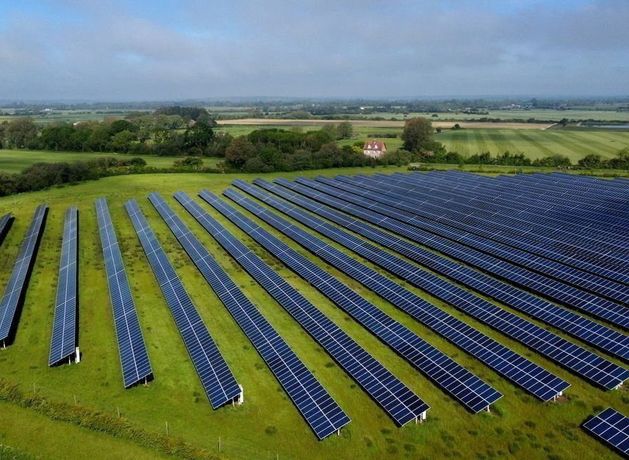Residents feel there are too many renewable energy developments already operating in their rural area
The Shronowen Solar Farm, proposed by Statkraft Ireland Limited, would be located on approximately 119.3 hectares across the townlands of Ballyline West, Coolkeragh, and Kilgarvan, on both sides of the R552 from Listowel to Ballylongford.
Statkraft Ireland has sought a 10-year planning permission for the development of the solar farm, which would operate for 40 years.
The farm would comprise of ground-mounted solar panels on steel support structures and other key developments. It would have security fencing, gates and 181 CCTV cameras.
The developer is also seeking to build an underground cable through Ballyline West and Tullamore to connect the solar farm to the grid.
Several landowners, including James Cox, Liam Cox, Padraig Gerard O’Donnell, Patrick Sheehan, Anne Lynch, Noel Madden, Micheál Mason and Jeremiah Ahern, have given their consent for the solar farm to be built on their property.
Consents for the underground cable will be sought separately.
Meanwhile, many local residents have objected to the proposed development.
A key concern of residents is the oversaturation of renewable energy projects in their area, which is already home to the Lenamore, Ballylongford and Tullahennel wind farms and the Ballylongford, Ballydonoghue and Drombeg/Tullamore solar farms.
Statkraft Ireland is also planning to develop Shronowen Wind Farm, an approved 12-turbine project it acquired alongside the Shronowen Solar Farm proposal last year.
Gavin Daly, a resident of Kilgarvan, Ballylongford, said there are already four wind farms and four solar farms within 10km of his home.
Mr Daly believes the development of the solar farm would further impact the appearance and residences of the area.
“Our current view of green fields, streams and hedgerows will be replaced by almost 300 acres of steel framework and black plastic-like panels,” he said.
“I envisaged my children settling down in this area in time to come, however, if this development were to proceed I believe the youth of this particular area will have no desire to set down roots near their family home.”
Liz Horgan, a Ballyline resident, questioned whether another renewable energy installation was needed locally.
“It seems disproportionate that our community continues to absorb more than its fair share of energy developments while others remain unaffected,” Ms Horgan said.
“Residents in the area have already had to adapt to the noise, disruption and visual impact of numerous wind turbines. Adding solar farms increases the cumulative burden on local people and may reduce quality of life and potentially even property values,” she added.
John and Sally Roche, from Tullahinell South, feel the scale and intermittent noise from nearby wind farms has devalued their property and the addition of the solar farm would further reduce its worth.
A loss of privacy as a result of the proposed development is also worrying locals.
Mr and Ms Roche said the plan for the solar farm to include so many CCTV cameras is “wholly disproportionate”.
“This creates an unacceptable sense of surveillance in a rural residential area,” they said.
“The type of cameras, whether they include audio or 360-degree vision, and details on who will monitor or record them are not specified.”
Objectors feel that the construction of the solar farm would lead to road safety issues.
Mr and Ms Roche claimed that the glint and glare from solar panels would be a nuisance to residents and pose “a real hazard to drivers on the R552, a main route between Limerick and North Kerry, with at least 3km of road directly exposed”.
Tanya Butler, of Ballyline West, said the R552 is already in poor repair after the second phase of building the nearby Ballylongford windfarm. She noted that lorry-related accidents occurred while its development was ongoing.
Ms Butler said the single-track road she lives on would lead to an access to the proposed solar farm, but it is not suitable for construction traffic.
Residents also fear the potential impacts on the habitats of local wildlife including swans, barn owls, hen harriers and bats.
Despite Statkraft reporting that it had engaged with local residents at their homes, distributed information booklets and attended a community meeting, Kilgarvan resident Jason McElligott said he did not receive any consultation on the solar farm project.
“I have not been consulted on how the project will be visually screened in proximity to my property. Furthermore, numerous documents within the application have not been accounted for my property and therefore are incomplete,” he said.
Kilgarvan residents Jack and Ann McElligott cast doubt on the annual community fund that would be comprised of contributions of €2 per megawatt produced per hour at the solar farm.
The fund, under the Renewable Energy Support Scheme, is promised to be in the region of €175,000 but Mr and Ms McElligott noted that this amount could vary if less energy is produced.
They said there is no clarity as to how much of the fund, if anything, will go directly to households adjacent to the solar farm.
Kerry County Council is due to make a decision on the solar farm application by September 30.
